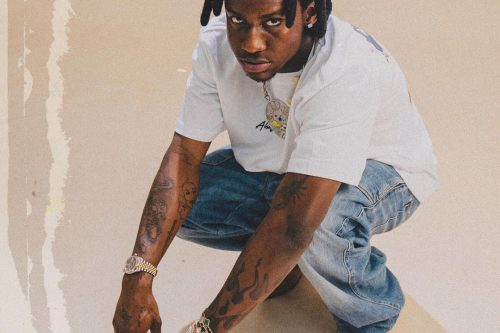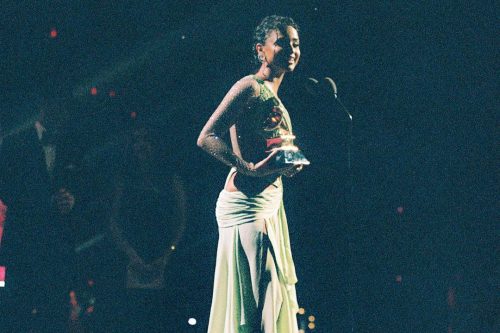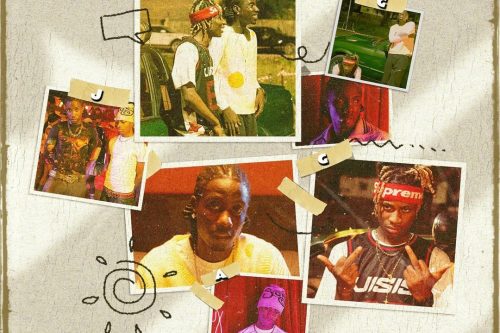Artists have been able to express themselves with their music and have found ways to do so, one of which is sampling, in the diverse tapestries of sound that exist in today’s international music landscape. Regardless of their cultural background, they are able to find inspiration by sampling old songs from different genres and artists. For instance –, J. Cole’s Let Nas Down samples the legendary Fela Kuti song Gentleman from 1973, the iconic afropop song Last Last by Burna Boy samples Tony Braxton’s 2000 song He Wasn’t Man Enough.
Sampling clarifies the fundamental connection and contrast between the historical and contemporary musical eras, highlighting the music industry’ vast rise and illuminating how artists have developed their creative vision over the years. Sare, which Ayra Starr created using a sample of from Lijadu Sister’s Orere Elejigbo, is a beautiful example of the creative connection between these artists from various musical eras.
Sampling has become one of the greatest weapons of artists getting a song that will not only showcase the ripple of their talents but also draw in music lovers with the ever prevalent nostalgia of quintessential tunes from age long. Simi’s Aimasiko is a sample of Ebenezer Obey’s song of the same name; music lovers aren’t just drawn to the song because it features one of Nigeria’s best music divas whose voice is booming through the tune.
Sampling occurs when a pre-existing song is recreated; it makes use of the beat, rhythm, and melody in addition to the lyrics, which is obviously the only goal of music sampling—to reach through your heart and enable you to relax into a “old but new” tune. In this situation, you should modify the song rather than simply copying it verbatim, all the while finding legal consent and extracting the hidden value of the timeless record.
What’s your favourite sample of 2022? 📀 pic.twitter.com/nZ9h9omhgH
— Sample Chief (@SampleChief) December 28, 2022
Even though he is no longer with us, Fela Anikulapo Kuti’s music continues to be performed by artists around the world through sampling. Kelly Rowland’s song, Hit Man is a sample of his 1976 song, Mr. Follow Follow. The artist takes inspiration from the instrumentals of the song and uses it in her own music, despite the fact that the two records have very different concepts.
Many of the Burna Boy’s songs contain samples from Fela’s discography, demonstrating the younger musician’s respect for the legend’s musical artistry— Ye is one of the songs from Sorrow, Tears & Blood that he has sampled. On a featured track from Skales, Temper Remix, the artist’s verse is also incorporated with more than just the lyrical content of the same track, Sorrow, Tears & Blood.
In the Nigerian music industry, sampling of songs is increasing more frequently, and the freshly sampled songs are, to use a musical term, beautiful. When it comes to Nigerian music, Paul Play Dairo was once dubbed the Johnny Drille of his generation. He was known for his seductive love songs like Forever and Angel of My Life, which are still played today.
Blaqbonez’ version of Forever in the form of Loyalty, a track on his sophomore album, Young Preacher, places him (Blaqbonez) in the position of being such a versatile artist and with the ability to blend to whatever musical composition he is poised with. Some of the known sampled versions of Forever are a testament to the fine quality of the music Paul Play made during his prime and the melting beauty of the artists’ talents who chose to make a sampled version of the track.
Kolo, which features Paul Play himself and Nonso Amadi, is a fantastic illustration of the connection that exists between musicians from many eras; despite the years of separation, the creative flow combines to produce an even more gorgeous rendition of this track in the shape of Kolo.
The majority of these songs that have been sampled are admired for their exceptional quality, evocative sound, and exquisite melodies, which leads us to the conclusion that songs should be created based on quality, not the requirement for a “hit.” Good music should be judged on its quality rather than its broad appeal; it should go beyond internet sensations and TikTok hits and focus more on the sound’s longevity and freshness with each listen.
All songs have the potential to become TikTok hits, but not all of them are of the finest quality. This helps us to understand why older songs from the Nigerian music scene are suddenly becoming popular again. Examples include the new trend for Wande Coal’s Who Born The Maga and Gentility by Melvitto and Wande Coal, despite those songs having been released years earlier.
Ma Wo Mi by King Wasiu Ayinde, a song from the 1990s that is currently trending online and becoming a viral trend, is yet another example of how any song has the potential to become a popular TikTok hit. This leads us to the conclusion that for music to endure the test of time, it should be drilled in the whirlpool of quality.
With an ever-refreshing sound at every listen, Wizkid’s Essence, which was released off of his Made In Lagos album in 2020, is an indication of great music that has sustained from the pandemic season up until now. It will come as no surprise to see samples of this song and the majority of the songs from that album in the near future because the artist has produced an iconic project ready to be explored by younger generations of artists. The artist himself has records that are sampled from earlier released songs from other artists— Manya is a sampled version of V.I.P’s Ahomka Womu, a song that became popular in clubs in the 2000s.
Even when Patience Ozokwor, equally known as Mama G, decided to pursue a career in music, she reworked the song, Ahomka Womu for her Make We Jolly single.
Sampling isn’t considered a bad thing when it comes to music; in fact, it highlights a piece’s beauty and untapped potential. In order to create hits with these sampled tracks, Burna Boy has so far done a fantastic job of sampling the music of older generation artists. He has demonstrated his limitless musical talent in addition to the beauty of these classic tunes.
As of now, sampling has established itself as a tool for connecting the past, present, and future of music. In fact, it will be an act that serves to remind younger generations of a bygone era and instill in their minds the idea that contemporary music is not just a reflection of the musical prowess of its creators but also influenced by earlier generations, and that it only becomes better with the course of time. This will facilitate the nobility of the artistic medium and leverage its timeliness.












Leave a Reply